Project > MOST - MatLab for OFWT Simulation Tools

MOST
MOST (Matlab for Offshore Simulation Tool), is a simulation tool operating in the WEC-Sim environment for simulating floating offshore wind turbines, hybrid wind-wave energy converters, platforms with multiple turbines, etc. MOST builds on WEC-Sim in MATLAB/Simulink to add windClass and windTurbineClass objects that can define a given turbine and weather conditions. Currently, MOST supports single-tower, three-bladed, horizontal-axis wind turbines controlled by Baseline or ROSCO controllers and providing geometric and inertial data as input.
MOST is developed and maintained by the MORE Energy Lab, Politecnico di Torino, Italy. The WEC-Sim+MOST coupling is a collaboration between the MORE Energy Lab and the WEC-Sim developers at Sandia National Laboratories and the National Renewable Energy Lab.

Why to use MOST
MOST, due to its higher flexibility and accessibility, can be considered an alternative to current OFWT simulation tools, which are characterised by a low accessibility because of their complex background code.
The choice to develop a model on MATLAB-Simulink was driven by the greater simplicity in setting the inputs and by a more intuitive structure. With MOST it is possible to modify the simulation parameters directly from the user interface, observing each step of the simulation and understanding the process of moving from inputs to outputs. In addition, since the original goal of this work was to optimize the geometrical dimensions of different platforms and verify their performances, MOST was developed with a particular view at the versatility in dealing with different floating platforms.
MOST manages to faithfully reproduce the FAST outcomes (considered the reference software for the simulation of OFWT, released by NREL), resulting in RMSE (Root Mean Square Error) on position and output power lower than 2%.
Try the software:

Tool for OFWT
To install MOST, please follow these steps:









